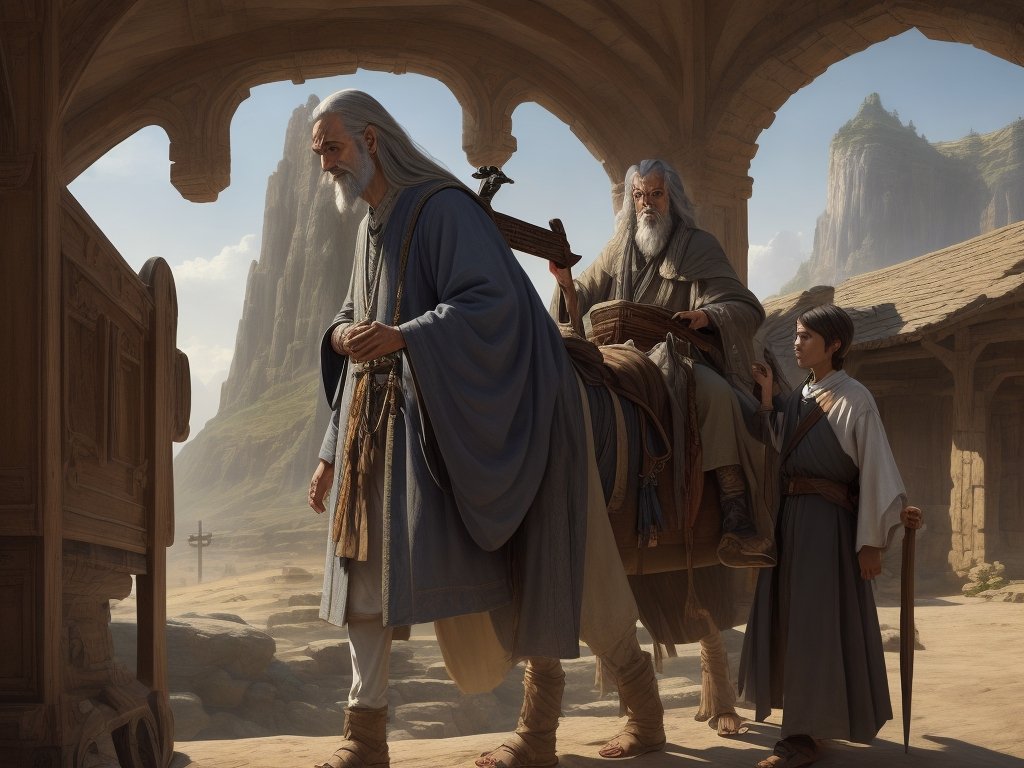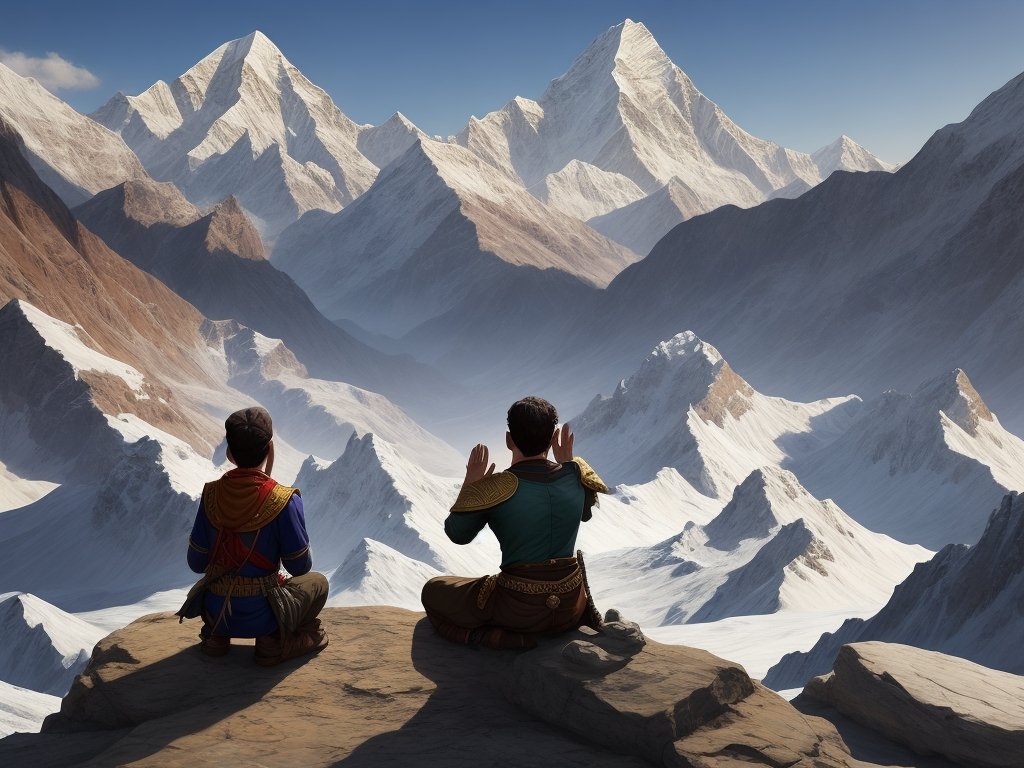The Mystery of the Hidden Years of Jesus Christ: Myths, Stories, and Relevant Locations
Disclaimer
The intention of this content is to expand awareness about certain places, myths and stories told at some point by humanity. Much of the information may not find scientific basis or contradict current theories. Knowledge, throughout history, is constantly updated, constructed or replaced as there is greater understanding. Therefore, we want to build a serious approach, within free thinking, and in its use in a beneficial way for collective evolution. If you enjoy this type of content consider following us on Instagram and Youtube for more.
Introduction
Imagine one of the most memorable people in the world today. Also imagine that some legends tell that this person was born in a special place, was visited by sages and had his story told for millennia to different peoples and cultures in the world. But, despite his official story, which has turned into countless movies and is told and retold every year, his life has a huge gap shrouded in mystery. Do you know who I'm talking about?
His name is Jesus Christ.
When the life of Jesus Christ is spoken of, the years between his childhood and the beginning of his public ministry remain shrouded in mystery. Known as "the hidden years of Christ", this period of Jesus' life is not documented in the canonical gospels, which leaves room for speculation and various theories. In this content, we will explore different perspectives on this immense historical and spiritual enigma, taking into account authors, scholars of the subject and the oral myths of cultures little known in the West.
What are the hidden years of Christ?
The hidden years of Jesus Christ refer to the period of his life between approximately 12 and 30 yo, where little or no information is available in the canonical biblical accounts. While gospels such as Matthew, Mark, Luke and John provide details about Jesus' birth and early ministry, almost nothing is mentioned about his life during his teens and early teens.
However, there is a relevant passage in the gospels about Jesus' stay in Egypt with his parents, Joseph and Mary, after his birth. The Gospel of Matthew, chapter 2, verses 13 to 15, relates that after the birth of Jesus, an angel appeared to Joseph in a dream, instructing him to flee to Egypt with the child and his mother, for King Herod was looking to kill Jesus.
So Joseph took the family to Egypt, where they remained until Herod's death. This event, known as the Flight into Egypt, is one of the few biblical passages that mention Jesus' early years and his stay outside Nazareth.
After Herod's death, another angel appeared to Joseph in a dream, directing him to return to the Land of Israel. The family then settled in the city of Nazareth, in the Galilee region, thus fulfilling the prophecy that Jesus would be called a Nazarene.
The official theory of the hidden years of Christ
Official Christian theology does not offer specific details about what happened to Jesus during the hidden years, only speculation. Prevailing tradition suggests that he lived a quiet life in Nazareth with his family, probably working as a carpenter until he began his public ministry at about age 30.
“After fulfilling all the requirements of the law of the Lord, Jesus' parents returned home to Nazareth in Galilee. There the boy grew up, healthy and strong. He was full of wisdom, and the favor of God was upon him. Every year Jesus' parents went to Jerusalem for the Feast of the Passover. When Jesus was twelve years old, they went to the Feast as usual. When the celebration was over, they left for Nazareth.”
- Luke 2:39-43
“Jesus was about thirty years old when he began his ministry. Jesus was known as the son of Joseph.”
- Luke 3.23
Holger Kersten's theory
One of the most notable theories that has gained popularity is that put forward by Holger Kersten in his book "Jesus Lived in India". In this work, published in 1983, Kersten explores the idea that Jesus not only visited India during his hidden years, but that he also studied Hinduism, Buddhism, and the spiritual traditions of the Indian subcontinent.
Kersten bases her research on a variety of sources, including apocryphal texts, oral tradition accounts, and Buddhist and Hindu writings. He claims that there are records in ancient Buddhist texts that mention a saint called "Issa", whose characteristics and teachings have remarkable similarities with the figure of Jesus Christ.
According to Kersten's theory, Jesus would have traveled to India at the age of 13 and, during his stay in the country, he would have acquired spiritual and philosophical knowledge. In addition, he would also have visited other regions, such as Kashmir and Ladakh, where, according to some traditions, there are tombs and monuments associated with his presence.
It is important to note that Holger Kersten's theory is considered highly controversial and has been the subject of criticism and skepticism by the academic community. Many scholars argue that Kersten's evidence is flimsy and that the similarities between the figure of Jesus and other historical and mythological characters may be merely coincidental.
Despite criticism, Kersten's theory of Jesus' hidden years continues to attract interest and curiosity in academic and spiritual circles. In addition to his book, the story was also covered in a documentary produced by the BBC entitled "Jesus Was a Buddhist Monk". This documentary explored Kersten's theory and provided a more detailed look at possible connections between Jesus and India.
Ultimately, Holger Kersten's theory, as well as other speculations about the hidden years of Jesus, remains an interesting perspective, but it is important to consider it with a critical and discerning eye, but always open to dialogue and ongoing debate with new discoveries.
Nicholas Notovich's Theory
Another notable theory about the hidden years of Jesus was advanced by Nicholas Notovitch, a 19th-century Russian explorer and writer. In his work "The Unknown Life of Jesus Christ" ("The Unknown Life of Jesus Christ"), Notovitch claims to have discovered intriguing information about the life of Jesus in travels in the East.
Notovitch alleges that during a visit to the monastery of Hemis, in Ladakh, the mountainous region of present-day northern India, he had access to ancient manuscripts written in Pali, a Buddhist language. These manuscripts, known as the "Hemis Manuscripts", reported the presence of a saint called "Issa", who, according to Buddhist monks, would be Jesus Christ.
According to the manuscripts, "Issa" would have visited the Himalayan region between the ages of 13 and 29, a period coinciding with the hidden years of Jesus. During his stay, he is said to have studied Buddhist and Hindu holy scriptures, sharing their teachings and gaining respect as a sage and healer.
However, Notovitch's theory has been the subject of intense debate and controversy. Many scholars argue that the "Hemis Manuscripts" do not exist or are based on erroneous translations. Furthermore, others suggest that Notovitch may have misinterpreted the manuscripts, and that the similarities between the "Issa" figure and Jesus may be the result of cultural and mythological influences.
Despite the criticism, the work of Nicholas Notovitch continues to arouse interest and curiosity about the possibility that Jesus had connections with India and other regions of the East during his hidden years. These theories, while controversial and still unproven, offer an intriguing perspective on the historical figure of Jesus Christ and his possible influence on other cultures and religious traditions.
The evidence and the search for “Saint Issa”
Impressed by the content and evidence raised by these authors and by the unexplored culture of the East, some documentaries were made by important broadcasters to explore the mystery of Santo Issa. If he really existed, he must have left marks on temples, stories and even local constructions.
The BBC has produced a documentary called "Jesus Was a Buddhist Monk" where it explores this point and visits intriguing sites in Pakistan and India, drawing attention to the similarities between Jesus Christ and the figure of the "Saint who came of the West". They describe "Issa" as a wise, compassionate man endowed with miraculous powers. He is often portrayed as healing the sick, raising the dead, and teaching profound spiritual principles.
Ghulam Ahmad, founder of the religious movement known as Ahmadiyya, championed the idea that Jesus Christ did not die on the cross, but instead survived the crucifixion and traveled to India and other eastern countries, where he continued his ministry among different communities. Ghulam Ahmad's perspectives have been the subject of debate and criticism by Muslim scholars as well as Christian and non-Christian scholars. While these theories are interesting to explore, their focus is on the years AFTER his crucifixion, but that controversy is for another post.
National Geographic and the History Channel have also brought historians and content to study the subject. Both explored some lore that suggests "Issa" spent time in India, where he studied Hindu and Buddhist scriptures and interacted with local sages and spiritual teachers.
However, it is important to note that these traditions and legends about "Saint Issa" are still shrouded in doubts and mysteries and often considered as myths. But, is there not a missing link in these stories? What would be the motivation for “copying” Jesus Christ within well-established traditions and religions that are even older than Christianity?
Conclusions
The hidden years of Jesus Christ's life remain an intriguing mystery, with various theories and speculations about what may have happened during this period. While official Christian theology does not offer specific details, some theories argue that Jesus may have traveled to other regions and studied other religious traditions.
Some institutions, unfortunately, have not played a very proactive role in revealing mysteries and historical truths. On the other hand, there are also those who take advantage of the ignorance of others to spread spectacular and false information. Thus, we believe that through exploration and free thinking, there are new discoveries that yearn for the light of day to add another piece to this puzzle.
If you want to explore further, in Puri, where there is the celebration of the god Jagannath in India; in the Kashmir region; in Ladakh; and even in Egypt itself you can find stories and traditions that go back to what we tell here. Although some of these places are involved in danger and conflict today, we are eager to seek new knowledge with new evidence.
Because after all, the truth is out there!



